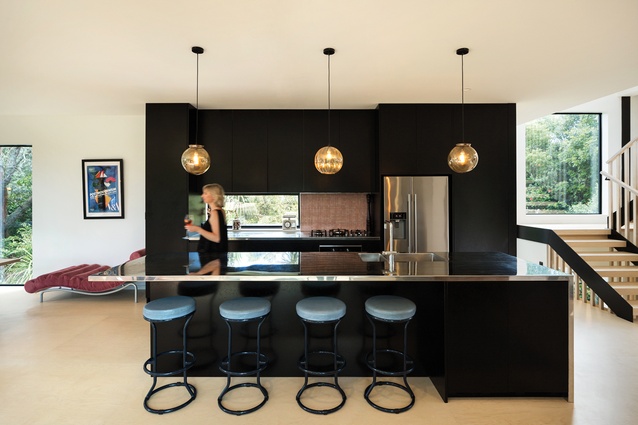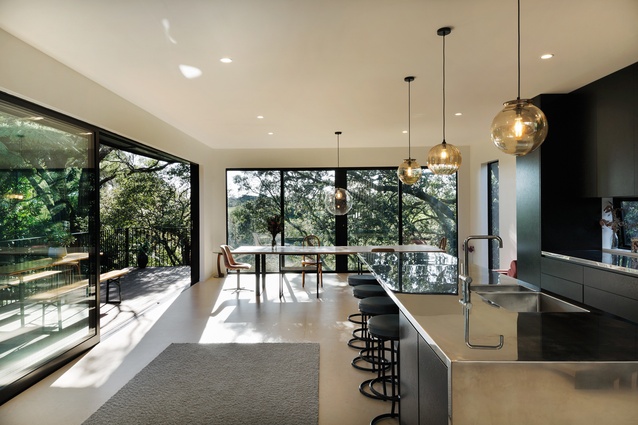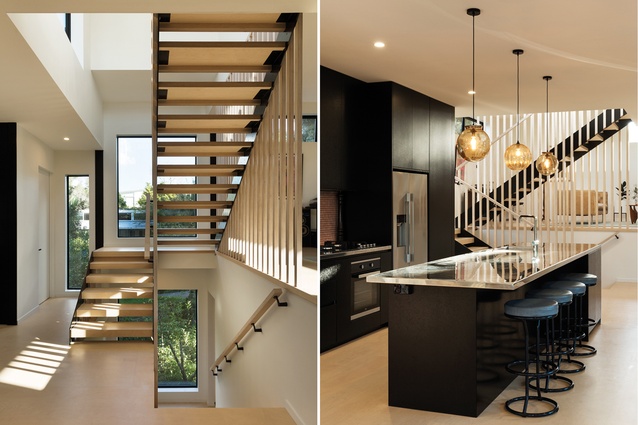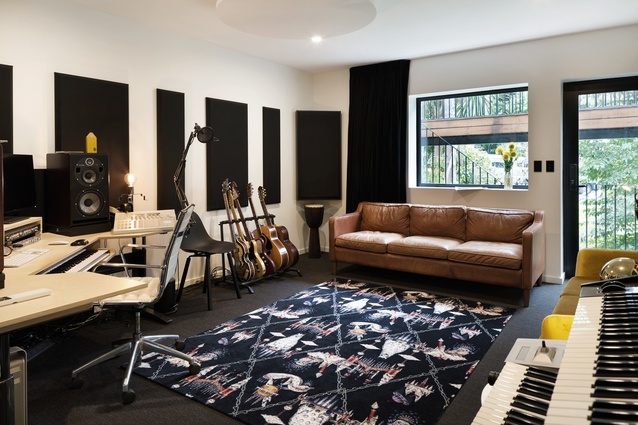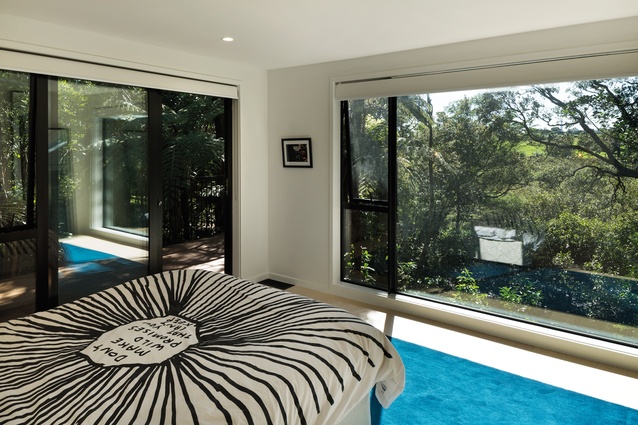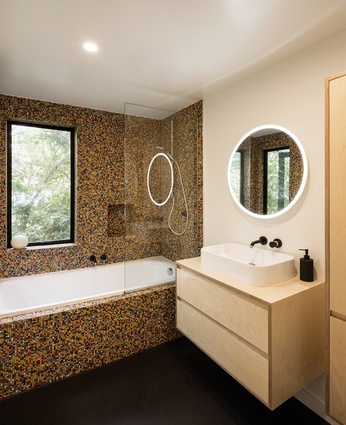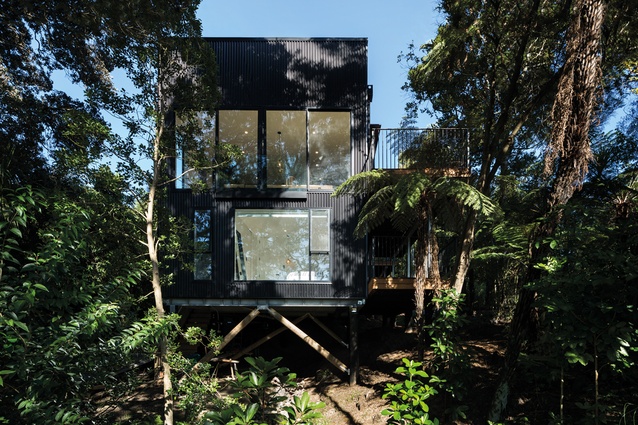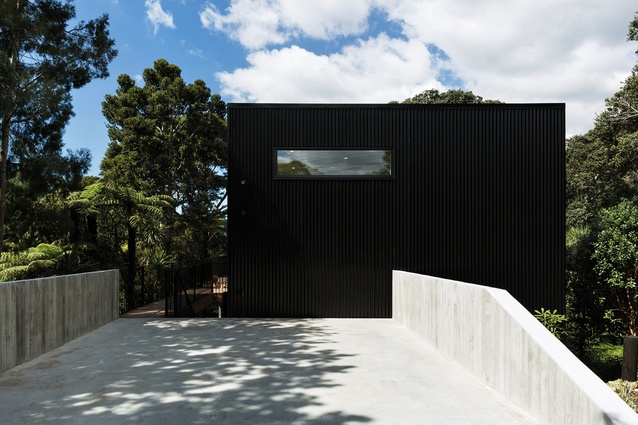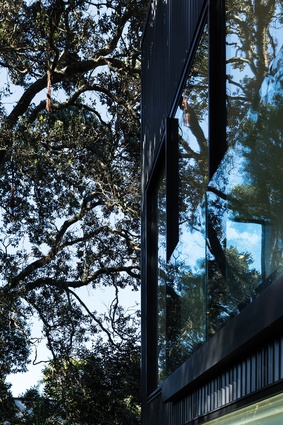Music in the mangroves: The Boat (House)
An award-winning musician and his partner team up with an up-and-coming young designer to build a fresh and vibrant home overlooking Auckland’s Meola Reef.
Growing up at the end of a quiet cul-de-sac in Auckland’s Point Chevalier, Mahuia Bridgman-Cooper perhaps never thought that he would one day be building more than a tree house at the bottom of the garden. But, when he started to look for his own home about 10 years ago, it soon became apparent there was little on the market to accommodate his requisite music studio space.
A violinist from the age of six, Bridgman-Cooper is a composer, producer and orchestrator, who has created award-winning film scores and countless television commercials, and produced records for prominent New Zealand artists. Amongst other musical ventures, he is also a founding member of local ensemble The Black Quartet.
When Bridgman-Cooper and his partner, management consultant Mindy Pilbrow, approached lead designer at Fabricate, Hamish Stirrat, they had some preconception of how their house would look. “It was always going to be a long, rectangular box,” says Bridgman-Cooper, “partly referencing the house I grew up in but also in response to the site.” It had to have a roof terrace as well, given there was no flat lawn area on the property’s steep site leading down to the mangroves.
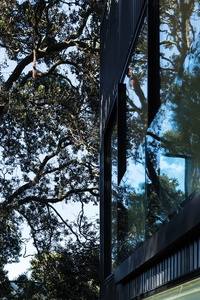
Stirrat describes the project as being “one of those cool client relationships right from the get-go” and the outcome is, quite fittingly, a finely tuned piece.
The roadside elevation of the two-storeyed home is very visible from a distance so it is purposefully stark and black. Yet, the deep-troughed black corrugate cladding somehow picks up the greys and blues of the sky above and the greens of the surrounding native trees, pronouncing the reflections in an ever-changing manner.
“We reduced any visible window framing to a minimum,” explains Stirrat, “so the windows look like punched openings in a bigger mass. The roofers really came to the party, crafting, tweaking and executing with elegance what was an evolution specific to this house.”
The house itself is an exercise in composition; as we move about the space, it starts to open up, with extensive decks along the northern side on two levels and a large interior atrium that serves as a light-filled stairwell leading to the rooftop terrace.
Inside, there’s a clever play between layers and levels. “The original concept was very long internally and not really sitting on the site,” says Stirrat, “so I broke the house about a quarter of the way through and it drops a metre to absorb some of the contour of the landscape.” This feature provides identification for different zones, doing away with the need for walls, and also effectively separates the music studio from the three bedrooms on the ground level.
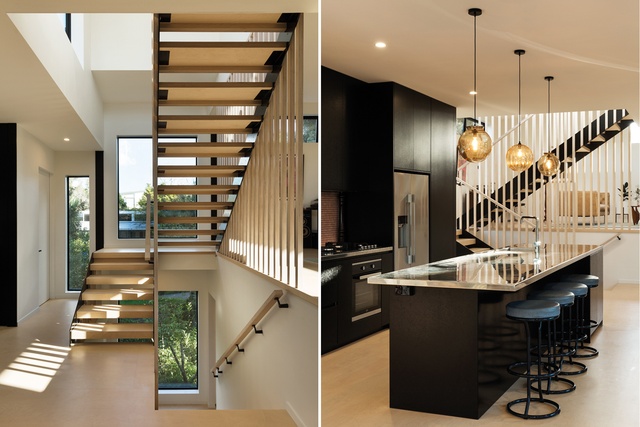
Acoustics specialist Marshall Day was called on to provide input for the music studio space, which is essentially a room within a room on a floating floor. The resultant surrounding air gap works to absorb the sounds.
“Their technical advice was invaluable,” says Bridgman-Cooper. “They offset power points so there are no direct lines of acoustic leakage and recommended we drill holes in the subfloor to remove any resonant chambers.”
The studio is used every day for both writing and recording and there’s room for up to seven people. “It’s a fantastic space,” Bridgman-Cooper says. “Studios have had a hard time in the last 20 years because of the digital revolution. No one buys records these days so no one is paid to make them, and spaces are expensive to upkeep so this little boutique studio is amazing.”
There are small quirks throughout the 220m2 home that are the creative sparks of both Bridgman-Cooper and Pilbrow. In amongst the instruments and the movie posters are vintage light fittings Pilbrow has found in far-flung shops and the whitewashed birchwood ply floors are inspired by their desire to give the living space a New York loft feel.
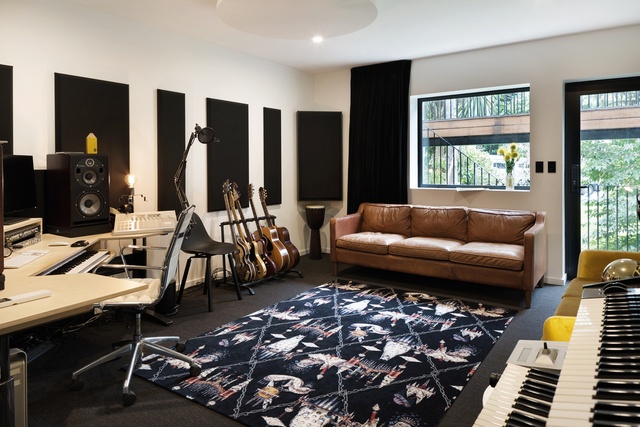
The guest bathroom wall has been sprayed in a beautiful gradient from lavender to pink by an aerosol artist and the couple’s en suite and daughter Mo’s bathroom are tiled in a colourful Artedomus mosaic collection, which is part Skittles, part arcade game.
Stirrat was impressed by Bridgman-Cooper’s involvement in the project and how quickly he came to grips with the building process. “I put it down to the fact that, as a musician, he’s thinking about individual notes and what they mean next to each other – not solely in the composition but when you break it right down – so, he’s actually working on quite a microscopic scale anyway. So, it was easy for him to get in and go ‘I understand that that’s a wall but tell me about the composition of it’.”
In terms of the overall process, it seems both designer and client were equally invested in the outcome, with each happy to push the other when necessary and the other happy to push back. “Every now and then you have clients like that,” says Stirrat. “They really elevate the project and make everyone around them want to do the best they can.”
This article first appeared in Urbis magazine.


